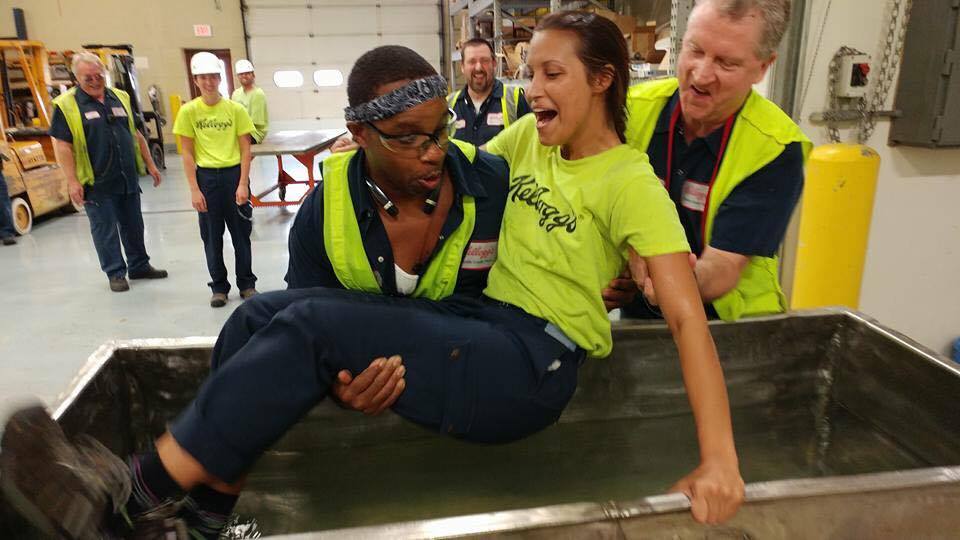Battle Creek, Michigan, or cereal city, is the home of W. K. Kellogg. The air is crisp and scented with warm cocoa Krispies. My grandparents have worked at Kellogg’s for many years, which allowed me to take advantage of the college program.
If you are at least 18 years old, have a family member who works at Kellogg’s and are enrolled full-time in college, you are allowed five summers at the Big Red K. Many people don’t make it all five summers, but I did. From summer 2012 to summer 2016, I made your cereal.
Making cereal sounds fun, but when I say “make cereal,” that doesn’t do justice to the Willy Wonka adventures I took part in daily.
For starters, the plant was one giant maze: five floors total, with many levels and ladders, along with conveyor belts lined wall to wall to transport the cereal on each floor. There are two sides to the factory: processing and packing. Processing is where the food is made. The ovens are hot, the air is thick and every ingredient is just waiting to make a mess for you to clean up. Packing is the opposite. It is cold, dry and paper cuts await.
All the cereal we made was for the U.S. and Canada. Krave cereal alone usually makes 100,000 pounds a day. This plant makes everything from Cocoa Krispies to Special K to a limited edition like Finding Dory. I have been covered in every. Single. One. It would be a weird day if everything stayed clean and the machines ran smoothly. In fact, we waited around anticipating the call on the radio to tell us something had gone horribly wrong.
I have shoveled enough cereal to feed all of Africa, and I wish I was exaggerating. Belts break, machines stop, things explode and it all makes a mess.
Imagine standing along a machine and, in the distance, you see a cloud of something erupt from above. As you make your way up the stairs, the radio shouts that they need help on the upper decks. Halfway there your visibility is reduced by 50 percent. You’re breathing 40 percent oxygen and 60 percent cocoa powder. That’s right. The cover of the cocoa powder broke off and you are now up to your knees in basically hot cocoa mix. If you would like a tan, this is a great way to get one.
The warehouse is where I got trained to work my second summer. This became my home, and the plant would soon seem like a nightmare compared to this job. The warehouse workers are usually the people that have worked at Kellogg’s for a long time. It is the job they have before they retire. I soon was fitting in with some of the best people. We would have our coffee and complain about the news in the morning. When we got a call that something went wrong, it didn’t affect us. We drove our forklifts and rode our bikes to and from the workplace and breakroom. We worked alongside robots that would do their jobs on occasion but often made messes for us to clean up. There were no hoses since we didn’t have to clean up food. There were also fewer managers than in the plant, which meant we could do our jobs without being bothered.
By my fifth summer, I was as seasoned as the most experienced employees. I had my coffee and my cliques. I knew who was there to help and who would hurt. The plant became a distant land as I gained more seniority through the years. The coworkers became my family.
In my five summers, I have seen one fire and one flood, two people lose a finger on separate occasions and participated in a good number of water fights. I have made some of my best memories there. Not returning this summer is going to be hard for me. I will not miss working every day for at least eight hours, but I will miss the people and the wild day-to-day adventures.


